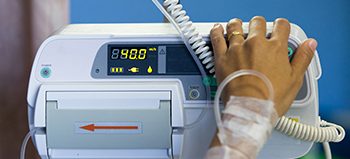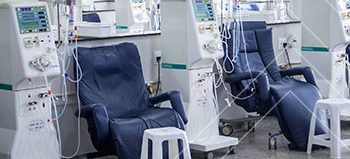In 2018, IDEXX Laboratories, Inc. (US) and Zoetis, Inc. (US) dominated the global veterinary point-of-care diagnostics industry, accounting for more than ~80–85% of the total market share.
The global veterinary point-of-care diagnostics market size is projected to reach USD 2.4 billion by 2025 from USD 1.4 billion in 2019, at a CAGR of 8.9%.
Some of the other prominent players operating in the veterinary point-of-care diagnostics market are Heska Corporation (US), Virbac (France), Thermo Fisher Scientific, Inc. (US), Eurolyser Diagnostica GmbH (Austria), Woodley Equipment Company (UK), Randox Laboratories LTD. (UK), AniPOC, Ltd. (UK), Carestream Health, Inc. (a part of ONEX Corporation) (Canada), NeuroLogica Corporation (a part of Samsung Electronics Co. Ltd.) (South Korea), and FUJIFILM SonoSite (a part of FUJIFILM Holdings Corporation) (Japan).
Download PDF Brochure@
https://www.marketsandmarkets.com/pdfdownloadNew.asp?id=105329994
Zoetis, Inc. (US) dominated the global veterinary point-of-care diagnostics market 2018. The company has a diversified product portfolio, which includes a wide range of point-of-care diagnostic products. IDEXX’s position in the market is attributed to its active R&D activities and wide distribution footprint across the world. To garner a larger share of the market, the company continuously focuses on product developments and launches.
Recent Developments:
# In 2019, IDEXX Laboratories launched a Canine Progesterone Test for Catalyst Dx and Catalyst One Chemistry Analyzers.
# In 2019, Zoetis, Inc. launched Stablelab, a handheld point-of-care diagnostic blood test for equine.
# In 2019, FUJIFILM SonoSite partnered with Partners Healthcare (US) to enable clinicians to perform scans at point of care.
# In 2019, Eurolyser partnered with Sysmex Corporation (Japan) to sell Eurolyser’s point of care systems measuring CRP.
IDEXX Laboratories, Inc. (US) accounted for the second-largest share of the veterinary point-of-care diagnostics market in 2018. Its dominance in the market can be attributed to its wide range of product offerings and its strong geographical footprint. In 2018, the company acquired Abaxis, Inc. (US), a pioneer in the veterinary point-of-care diagnostics industry for USD 2.0 billion. The company also focuses on R&D activities to develop its animal health solutions that meet the customers’ demands.
Key Questions Addressed in the Report:
# Who are the top 10 players operating in the global veterinary point-of-care diagnostics market?
# What covers the drivers, restraints, opportunities, and challenges in the veterinary point-of-care diagnostics industry?
# What are the new technological advancements in the veterinary point-of-care diagnostics market?
# Comment on the regulatory scenario for the veterinary point-of-care diagnostics industry in various geographies.
# What are the growth trends in the veterinary point-of-care diagnostics market at the segmental and overall market levels?
Request Sample Pages@
https://www.marketsandmarkets.com/requestsampleNew.asp?id=105329994
By end user, the veterinary clinics segment accounted for the largest share of the veterinary point-of-care diagnostics market in 2018
Based on end user, the market is segmented into veterinary hospitals & academic institutes, veterinary clinics, and home care settings. In 2018, the veterinary clinics segment accounted for the largest share of the market. The large share of this segment is attributed to the growing number of patients visiting vet clinics and the increasing number of private clinical practices.
North America will continue to dominate the market during the forecast period
The market, by region, is segmented into North America, Europe, the Asia Pacific, Latin America, and the Middle East & Africa. North America accounted for the largest share of the veterinary point-of-care diagnostics market in 2018. The large share of North America in the global market can be attributed to the increasing adoption of companion animals, growing veterinary healthcare expenditure, and rising demand for animal-derived food products.


